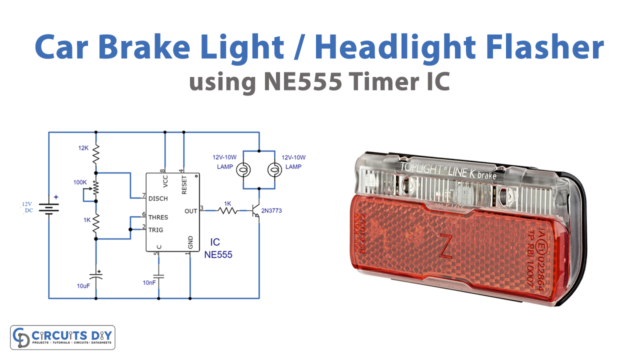Here is a simple and easy DIY project tutorial of a dark-activated alarm circuit utilizing a 555 timer IC. Generally, it will deliver a perceptible alarm signal when there isn’t any significant light on the surface of the LDR. Meanwhile, the circuit is wired around a popular 555 timer IC. The IC is likewise utilized as an Astable Multivibrator here.
Additionally, we have clarified a dark-activated alarm circuit by utilizing a 555 timer IC along with an LDR (Light Dependent Resistor) which detects the light based on environmental factors. Moreover, if it doesn’t locate the light, it triggers the IC and shines a LED appended with the circuit. Instead of the LED, we can likewise utilize a buzzer or speaker to utilize it as a dark detector alarm.

Hardware Components
The following components are required to make Dark Activated Alarm Circuit
| S.no | Component | Value | Qty |
|---|---|---|---|
| 1. | IC | NE555 Timer | 1 |
| 2. | LDR | – | 1 |
| 3. | Speaker | 8 ohms | 1 |
| 4. | Resistor | 1k, 1.2k, 47k | 1 |
| 5. | Ceramic Capacitor | 0.05uF | 1 |
| 6. | Electrolyte Capacitor | 4.7uF | 1 |
| 7. | Variable Resistor | 10k | 1 |
| 8. | Battery | 9V – 12V | 1 |
NE555 IC Pinout

For a detailed description of pinout, dimension features, and specifications download the datasheet of 555 Timer
Dark Activated Alarm Circuit

Working Explanation
Here in this dark activated alarm circuit, LDR is arranged with 555 timer IC in ASTABLE mode so that 555 ASTABLE creates a square wave when the light power goes under a specific level.
Moreover, the 10K variable resistor is utilized to alter the circuit to enact the alarm on the necessary degree of dimness. Additionally, an LDR is utilized as a light detective sensor. The yield of the IC is associated with an 8 ohms speaker through a 4.7uF electrolytic capacitor that is functioning as a channel. The sound/alert tone can be changed by changing the estimation of the 0.05uF capacitor. The circuit can be worked from 9V to 12V DC, you can likewise utilize any sort of battery or power flexibly. For best outcomes fit the circuit in an appropriate fenced-in area. Make a point to cause a gap in the packaging for the LDR to detect light.
Applications and Uses
- Use in light-sensitive rooms













